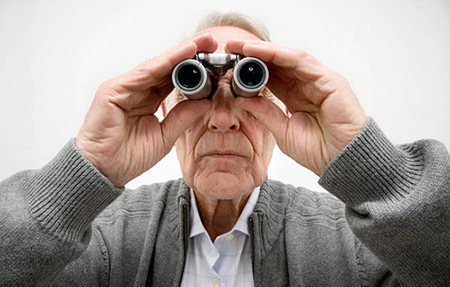What is involutional depression and how is it treated?


Involutional depression is a form of depressive psychosis that usually develops in men at the age of 50-65 and in women at the age of 40-55. In women, it is commonly associated with pre- and postmenopause.
It is believed that this type of depression develops when the function of the endocrine glands diminishes and people lose their reproductive function. It is also promoted by the age-related changes in personal relationships and professional life characteristic for this period of life.
Short information about involutional depression
Officially, this form of depression is not considered an age-related condition so it is classified as any other depression type. However, many psychiatrists consider involutional depression a separate type of depression due to the typical manifestations, flow, and prognosis.
Involutional depression risk factors
The first episode of involutional depression usually occurs at the age of 45 years or several years later. In this type of depression, family history of this malaise is not as important as in other types of mental disorders.
People more prone to this condition usually are normally integrated into the life and don’t show any signs of mental disorder before the onset of the symptoms. However, people in the risk groups have particular features: they are impressionable individuals with obsessive and perfectionist tendencies self-esteem requires approving reactions from significant others.
The provoking factors could be:

- Menopause;
- Death of a loved one;
- Moving out of children from parental home;
- Promotion of colleagues instead of the patient.
Realizing that time is running out forever, these rigid, achievement-oriented people face the threat of being unable to achieve their goals. It severely affects their self-esteem and creates a favorable soil for depression development.
Symptoms of involutional depression
The clinical picture of involutional depression comprises several criteria:
- Depressed mood;
- Anxious agitation with fear;
- Verbal illusions;
- Other type of delusions including paranoia.
Stages of involutional depression:
- The initial period of the disease can last from several weeks up to one year and is distinguished by atypical depression and apathy, dysphoria (generalized dissatisfaction with life), and hypochondria (worries of having several illnesses).
- Second stage is the exacerbation distinguished by agitation, anxiety, motor unease. In older individuals, this stage is characterized by irritability or anger. The picture is supplemented by depressive delusions of various forms (ideas of self-deprecation, self-accusation, condemnation, or hypochondria). In the structure of psychosis, a picture of anxious-agitated depression with fear, motor agitation, and severe adaptation disorders (increased anxiety when changing places) can be observed. In a state of anxiety, patients can impulsively inflict severe damage on themselves and make serious suicidal attempts.

Agitation may alternate with a state of numbness (depressive stupor). Psychosis is complicated by delusional symptoms, depressive ideas of immensity, hypochondriacal-nihilistic delirium (various variants of Cotard's syndrome) arise. Verbal illusions or hallucinations corresponding to the dominant affect are often encountered.
Such a complex depressive syndrome can last 2-3 years. Then the clinical picture stabilizes, becomes more and more monotonous. If it is not possible to induce therapeutic remission, then the intensity of affective disorders gradually decreases, anxiety and fear decrease, and all psychotic disorders are reduced. Sometimes, for many years, monotonous anxiety and phenomena of reduced motor restlessness are observed. There are signs of behavior regression (gluttony, slovenliness, etc.) and a decrease in the level of mental activity, including the inability to learn new simple skills while maintaining the ability to implement previously-learned complex skills.
Subtypes of involutional depression
- Simple depression. The development and symptoms of these depressions are closely related to situational and reactive moments. Although even with them anxiety accompanying lowered mood prevails. Also, hypochondria occupy a large place; persistent delusional disorders and agitation are usually absent. Their prognosis is generally favorable, but nevertheless, they often turn into persistent subdepressive states with gloom and increased hypochondria.
- Involutional delusional psychoses. Hallucinatory-paranoid psychoses of late age with a clear tendency to syndrome complication, in particular to the development of mental automatism, during follow-up checks in most cases turn out to be late manifesting or exacerbating forms of schizophrenia.
- Involutionary paranoia. The course is chronic (up to several years) or wavy. The clinical picture is determined by a systematized monothematic paranoid delusion in the form of ideas of jealousy (mainly in men), then ideas of harm (more often in women) or persecution. Such psychoses are rich in argumentation and delusional interpretations; detailed delusions gradually develop. Delirium also spreads retrospectively (delusional rethinking of the facts of the past). Patients are characterized by stenic, often uplifted, affect, optimism, and exhibit the high delusional activity of the "persecuted persecutor" type. These psychoses are usually not accompanied by significant personality changes and do not translate into organic decline.

- Involutionary paranoid ("late paranoid", paranoid of small scale or everyday relationships). It occurs more often in persons with features of paranoia and rigidity in their character. The course of such psychoses is protracted or wavy. The clinical picture of paranoid is determined by "small-scale" delusions of persecution (sabotage, oppression), poisoning and damage, which is designated in the same way as delusions of small scale or everyday relationships. Delirium is directed mainly against specific individuals from the patient's environment (family members, neighbors) or people with whom the "persecutors" may be associated (police officers, doctors, etc.). As a rule, delusions are systematized, although the delusional system remains simple and specific. Persecution is usually interpreted in terms of damage (attempts to deprive the patient of a room, damage to property, etc.). Separate verbal illusions, less often verbal hallucinations are noted.
Quite often, the delirium of poisoning with olfactory deceptions (smells of gases, poisonous substances) and a delusional interpretation of various somatic sensations is added. At the same time, revelatory ideas are developing against the persecutors (the same neighbors are doing "dark deeds"). The behavior of patients becomes more and more delusional, often with litigious struggle. The mood is at times anxious and depressed, but optimism prevails. After a change of place of residence, delusional production, as a rule, is temporarily stopped, but the delusional correction does not occur. Outside the sphere of delirium, patients retain their usual social ties, serve themselves, and are fully oriented in everyday matters. Even with a long course of the disease, pronounced psychoorganic disorders do not develop. Personal changes are limited by growing suspicion and conflict.
Treatment of involutional depression

Treatment of both affective and delusional involutional psychoses does not differ from drug therapy of other mental diseases with similar symptoms. In cases of anxious-agitated and anxious-delusional depressions, antidepressant drugs alone are not enough. Combined treatment with antipsychotics (chlorpromazine, chlorprothixene, tizercin, etc.) and antidepressants (amitriptyline, imipramine) is recommended.
It is often advisable to start treatment with antipsychotics and only after reducing anxiety-delusional arousal to add antidepressants to them. In case of involutional affective and affective-delusional psychoses resistant to psychotropic drugs, electroconvulsive therapy (ECT) is used (in the absence of contraindications). In delusional forms, ECT is ineffective; treatment with aminazine, triftazine, haloperidol is indicated. Such treatment must be carried out in a psychiatric hospital, where it is possible to provide patients with a comprehensive somatic examination, control over their condition during therapy, prevention of complications, as well as an effective treatment of complications if they occur. The likelihood of suicidal tendencies should also be borne in mind.
Prognosis
Involutionary depression is usually accompanied by agitation and pronounced anxiety, the danger of suicide is great. Often there is hypochondria, which in many cases predominate in the clinical picture. Otherwise, mental content and symptoms are similar to other types of depression. Although the disease is usually limited in time and usually lasts 9-18 months, it is debilitating and dangerous. The prognosis of cure is favorable. Responses to somatic therapy, medications, or electroshock therapy are positive in 85 to 90% of cases, and the recovery period is significantly reduced. Relapses occur less frequently than in other types of depression and may be delayed by 10-20 years.
Post is made based on the information provided by: Christopher Ames, MD, pshychiatrist, Medibank, Sydney, New South Wales, Australia
(Updated at Apr 14 / 2024)
Tofranil articles:
Some of the trademarks used in this Web Site appear for identification purposes only.
All orders are reviewed by a licensed physician and pharmacist before being dispensed and shipped.
The statements contained herein are not intended to diagnose, treat, cure or prevent disease. The statements are for informational purposes only and is it not meant to replace the services or recommendations of a physician or qualified health care practitioner. If you have questions about the drugs you are taking, check with your doctor, nurse, or pharmacist.